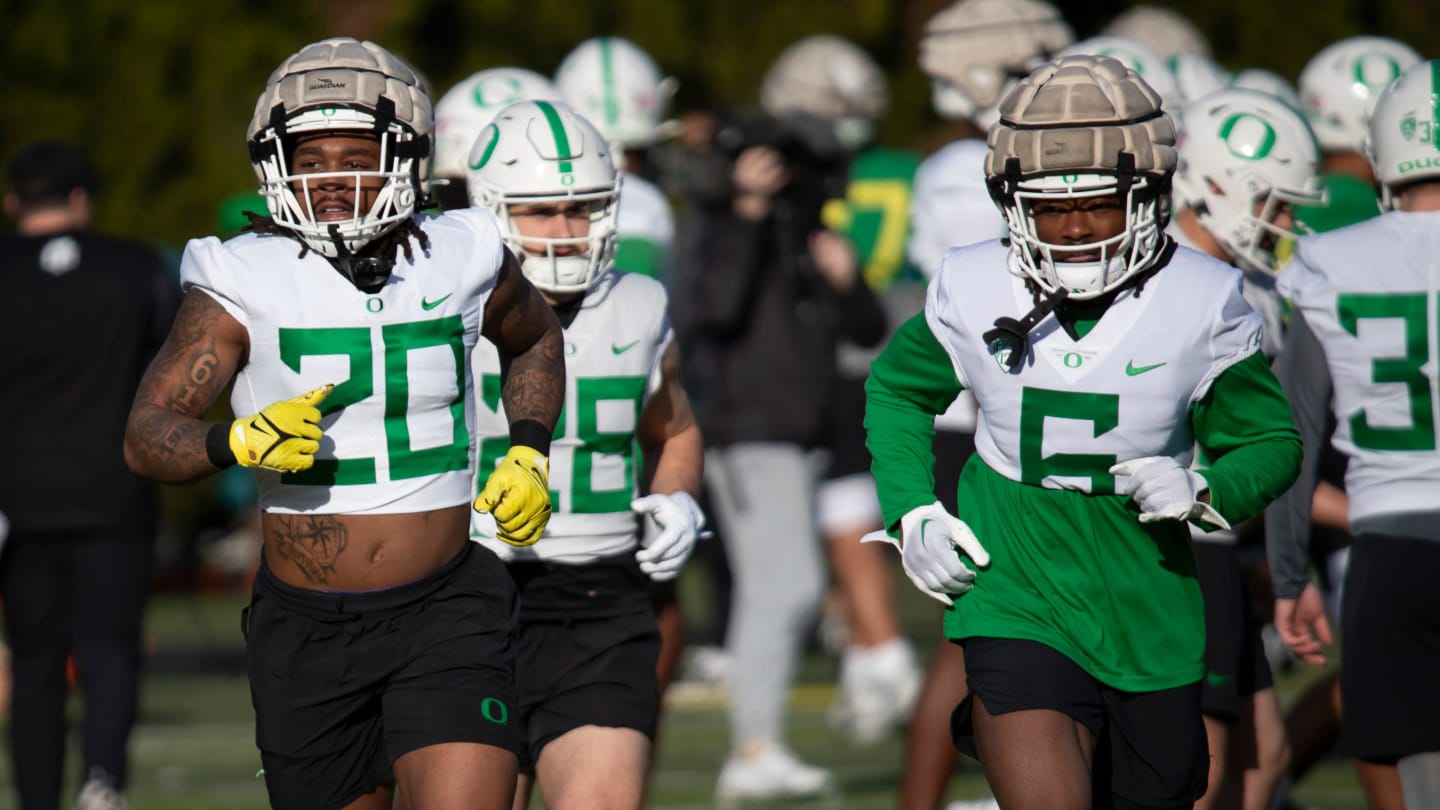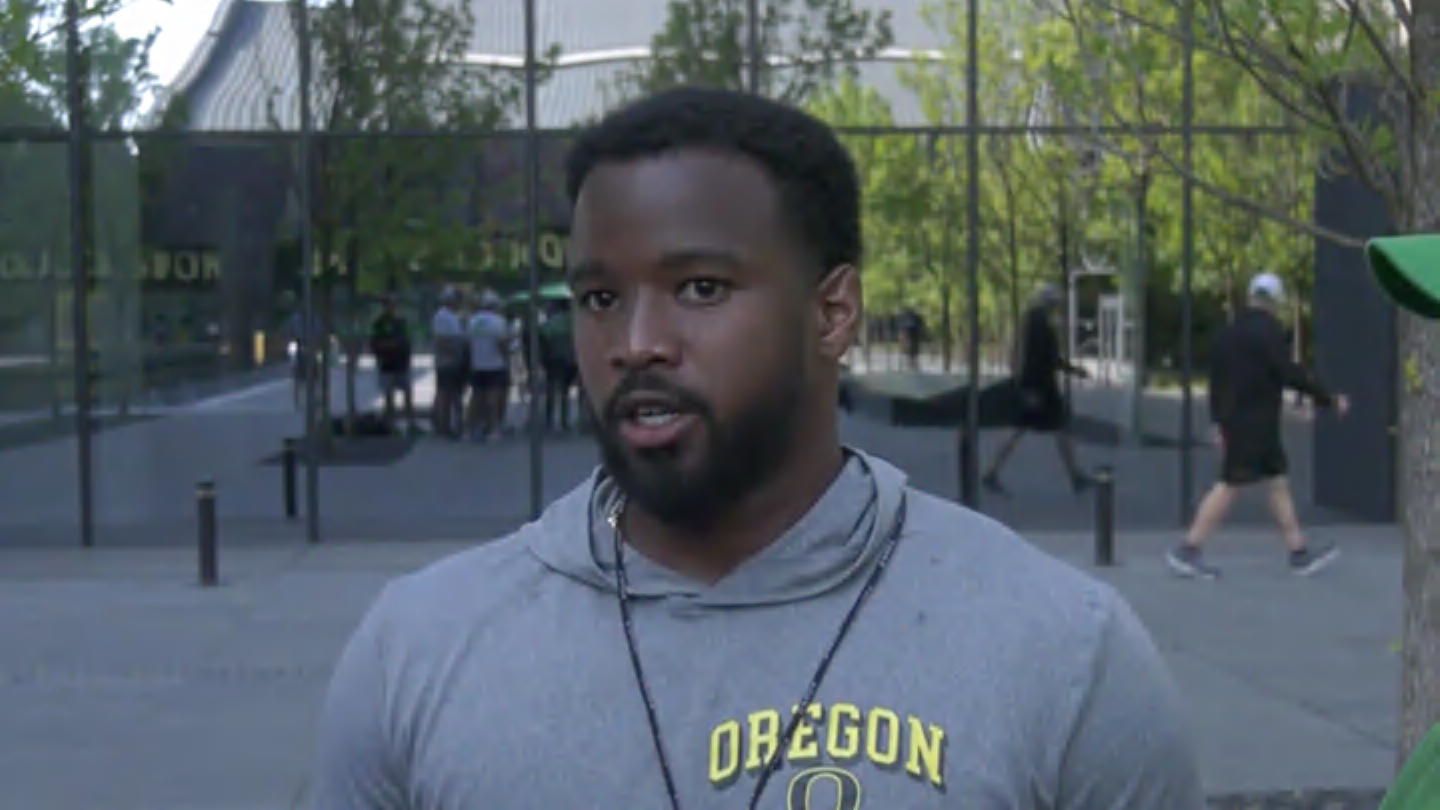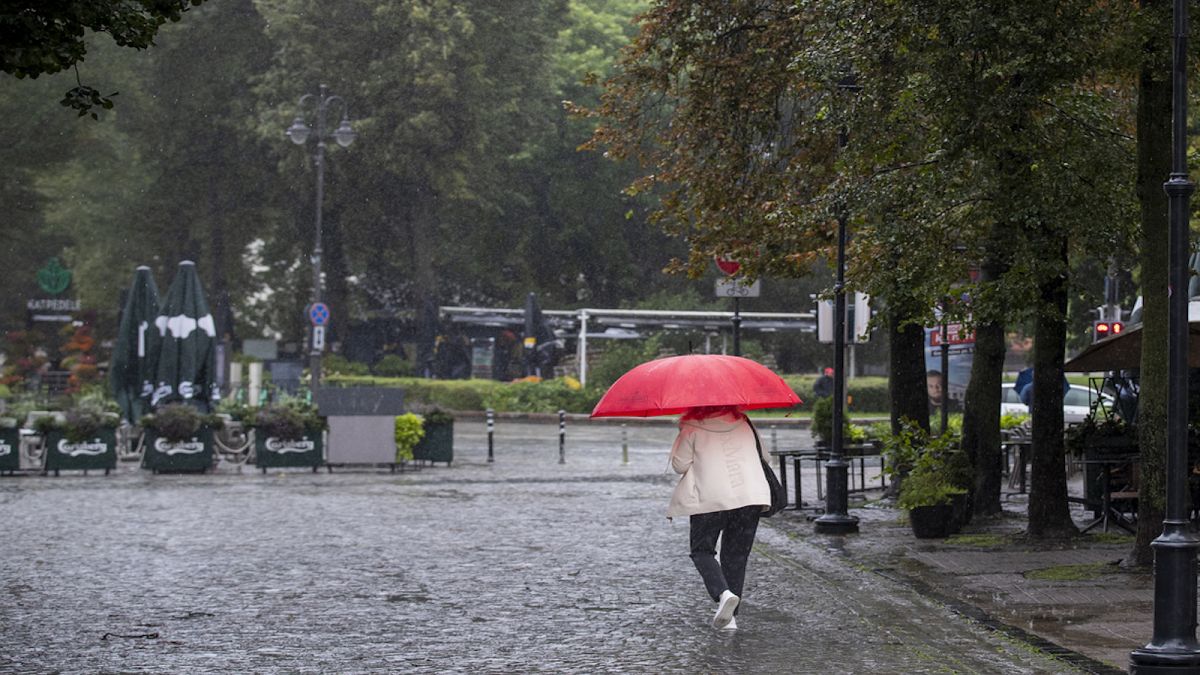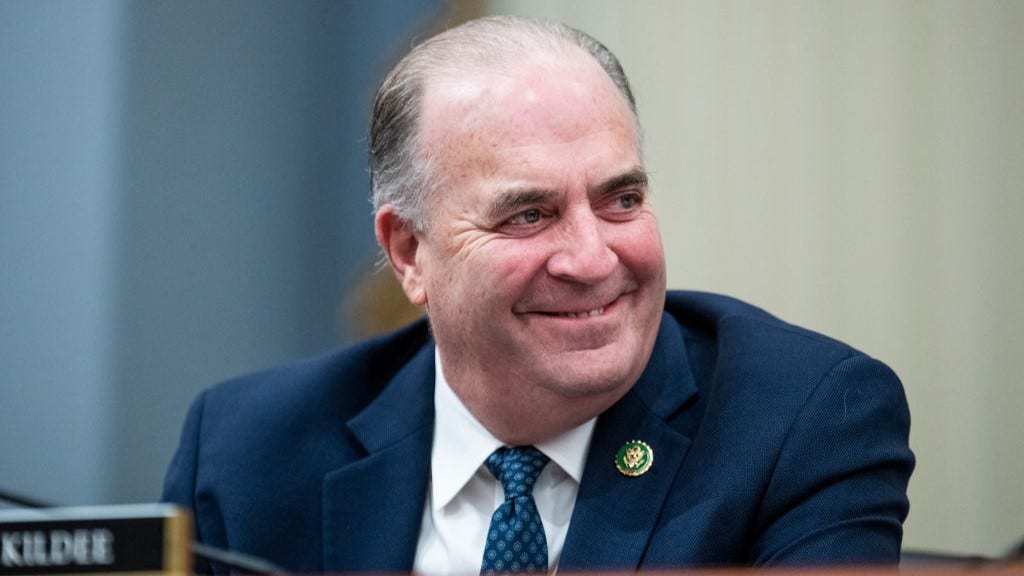Oregon
Oregon Ducks Pair Named to Doak Walker Award Watch List

The nation’s best running back could be in Eugene. But which one?
Two Oregon Ducks football running backs have been named to the Doak Walker Award preseason watch list, presented annually to the nation’s most outstanding college running back. The pair of Ducks are Jordan James and Noah Whittington.
Oregon is one of 10 schools with multiple running backs on the watch list for the Doak Walker Award, which is presented by the PwC SMU Athletic Forum.
Ten semifinalists for the honor will be named in November, followed by the announcement of three finalists later that month. The recipient of the 2024 Doak Walker Award will be announced live onThe Home Depot College Football Awards on Dec. 12, 2024.
Oregon has had six Ducks named as semifinalists or better. LaMichael James in 2010 is the only Duck to win the award.
Jordan James ran for 759 yards and 11 touchdowns on 107 carries last season, playing in all 14 games. His 7.09 yards per carry led the Pac-12 and ranked 10th nationally, and his 11 rushing touchdowns tied for most on the team and third-most in the conference.
Whittington played in just the first four games last season, utilizing a medical redshirt after sustaining a season-ending injury. In those four games, he ran for 148 yards and two touchdowns on just 20 carries, adding 78 yards on 10 receptions. Back in 2022, Whittington rushed for a career-high 779 yards and five touchdowns on 139 carries while catching 22 passes for 169 yards and a score.
The Ducks open the season Aug. 31 in Autzen Stadium against Idaho.

Oregon
Oregon State No. 4 in the men’s soccer preseason poll, highest placing in school history

Coming off its best finish in school history, there are high expectations for Oregon State men’s soccer heading into the 2024 season.
The Beavers earned their highest placing in the coaches preseason poll, landing at No. 4. The previous high was No. 5 in 2022.
The top three teams are Clemson, Notre Dame and West Virginia.
Oregon
Can AI help fight wildfires?

In this image provided by the Oregon Department of Transportation, the Durkee fire burns in the background as it nears Interstate 84 near Huntington, Ore., early Sunday, July 21, 2024. (Oregon Department of Transportation via AP)AP
Large forest fires fueled by climate change have burned over 1 million acres in California and Oregon, marking a particularly destructive start to wildfire season and hastening the need for new solutions.
It’s no surprise that much of that focus is on artificial intelligence, a burgeoning and hopeful technology that has also stirred fears and anxiety about its potential consequences, such as eliminating human jobs and industries.
AI is already used to mitigate the threat of wildfires nationwide, helping communities in the drought-hit West and places like Maui find, avoid, fight, and recover from them.
AI can help detect the first signs of smoke, spot fires from satellites, and predict where fires may start and how they will burn in certain terrains. On July 23, the Biden administration announced a $20 million investment that will improve detection, tracking, and provide public safety data.
The federal government maintains an online tracking system that offers a trove of live wildfire data neatly displayed on a map. It can show the location and size of fires, including associated smoke plumes and air sensor readings, acting as early warning systems for residents in neighboring communities and states.
While AI has been useful for residents, there are reservations about its effectiveness on the front lines, where humans remain the best form of defense against wildfires.
Max Alonzo, a 12-year wildland firefighter veteran and current Secretary-Treasurer of the Washington, D.C.-based National Federation of Federal Employees, told Reckon that he doesn’t believe AI has made much of a difference and has detracted from major pay and welfare disputes within the federal government’s wildland firefighting service.
“Artificial intelligence cannot pay our men and women enough,” said Alonzo, whose organization is leading a multi-year effort to secure a permanent pay increase and benefits for wildland firefighters. “It can’t raise the budget to create housing in rural areas for our land management employees. It can’t address the mental health issues we see with our men and women deployed to these fires for months at a time.”
Alonzo said he’s unaware of any formal AI training or planning within the service. However, he did note that as the threat from climate change has grown, the resources needed to fight wildfires have not and are becoming increasingly difficult to maintain.
“I’m sure there is a place for AI,” he added. But I have not seen where it can really make any positive impact at this point.”
The average wildland firefighter’s pay is typically around $34,000 a year but was significantly increased in 2021 by a temporary $20,000 bump that expired in Sept. 2023. However, with predictions that 50% of firefighters would quit without a new pay deal, the increase was extended by another year.
The U.S. House passed a $330 million pay increase, and there are encouraging signs that the plan will pass the U.S. Senate. But money is just one of the issues. High rates of suicide, homelessness and cancer remain major points of contention as pay negotiations continue.
Big wildfire season
Nearly 30,000 wildfires have burned around 4.7 million acres in 2024, higher than the 10-year average, according to the National Interagency Fire Center (NIFC).
The Durkee Fire in Oregon’s Blue Mountain region is 86% contained as of Monday after burning around 300,000 acres since July 17. Started by lightning strikes, it’s one of the largest wildfires in state history. Dozens of other large blazes in the state are close to collectively surpassing the massive and destructive 2020 season, which burned around 1.2 million acres.
California’s Park Fire has burned close to 400,000 acres but was allegedly started on purpose. It’s the fourth largest in state history and is around 30% contained.
It was hoped that heavy summer rains would deter drought conditions, but a triple-digit heatwave in July left large chunks of the West vulnerable. Smoke from the fires has spread to northern Canada, the Gulf of Mexico, and the Atlantic Ocean, according to the NIFC.
AI has shown some promise in mitigating the worst of wildfires and helping plan ahead.
In the aftermath of the Maui wildfires, which were started by downed powerlines but exacerbated by dry conditions, Michigan State University researchers produced highly detailed maps that allowed them to track how the fires started and spread. The maps can help with remediation efforts and assess future risks, like the location of forests and vegetation in relation to at-risk communities. Other AI technologies under consideraation in Hawai’i enable officials to make hyper-local wildfire predictions using rainfall, soil moisture and wind speeds. According to scientists at the University of Hawai’i, dry brush and high winds are strong predictors of wildfires.
Although some AI wildfire technology may be years away from reaching its full potential, combining it with advances in robotics, software, and climate change research could help with more than just detecting and fighting fires, such as monitoring flooding.
Here are some ways technology is helping:
1. Early detection and monitoring
- Satellite imagery: Satellites equipped with thermal sensors and infrared cameras can detect hotspots and monitor wildfire spread in real-time.
- AI-supported wildfire sensors: Ground-based sensors enhanced with artificial intelligence (AI) analyze data in real-time to detect early signs of wildfires, such as smoke, temperature spikes, and unusual atmospheric conditions.
- Drones: Unmanned aerial vehicles (UAVs) provide high-resolution images and real-time data, even in remote or inaccessible areas. They can also detect heat signatures and map fire perimeters.
2. Prediction and risk assessment
- Machine learning: Algorithms analyze vast amounts of data, including weather patterns, vegetation moisture levels, and historical fire data, to predict wildfire risk and behavior.
- Weather forecasting models: Advanced meteorological models predict conditions conducive to wildfires, such as high winds and low humidity, enabling better preparedness.
- GIS mapping: Geographic Information Systems (GIS) map high-risk areas by analyzing topography, vegetation, and human activity, helping to allocate resources more effectively.
- Flooding sensors: Post-fire sensors can monitor areas at risk of flooding due to vegetation loss and altered landscapes, providing early warnings and risk assessments.
3. Communication and coordination
- Incident management systems: Integrated systems like the Incident Command System (ICS) help coordinate responses by providing a common platform for communication and resource allocation among multiple agencies.
- Mobile apps: Apps like “Wildfire Info” and “Fires Near Me” provide real-time updates and alerts to the public, helping communities stay informed and safe.
4. Suppression and containment
- Aerial firefighting: Advanced aircraft equipped with infrared cameras and water or retardant dropping systems, such as I4F foam, are used to combat fires. These include helicopters, drones, and fixed-wing planes.
- Robotics: Ground-based firefighting robots can navigate hazardous terrains to create firebreaks, clear vegetation, and apply fire retardants, reducing risk to human firefighters.
- Firefighting equipment: Innovations like fire-resistant drones and autonomous vehicles enhance firefighting capabilities and safety.
5. Post-fire analysis and recovery
- Remote Sensing: Post-fire, remote sensing technology assesses damage, maps burned areas, and monitors vegetation recovery.
- Data Analytics: Analyzing data from past wildfires helps improve future responses and strategies. This includes understanding fire patterns and the effectiveness of suppression techniques.
Oregon
Oregon Ducks Coach Ra’Shaad Samples ‘Expects’ To Win Texas Recruiting Battles

The Oregon Ducks’ 2025 recruiting class is taking shape and flexing it’s connection to the state of Texas. Oregon coach Dan Lanning’s strong connection to Texas is partly thanks to Oregon running backs coach Ra’Shaad Samples.
Samples was the primary recruiter for the nation’s No. 1 wide receiver Dakorien Moore committed to Oregon over his hometown state’s Texas Longhorns, LSU Tigers and Ohio State Buckeyes.
Samples had a special relationship with Moore – Samples’ father is Moore’s high school head coach at Duncanville (TX).
How does it feel for Samples to sway an elite athlete away from their home state?
“I mean, it feels normal. I think that’s what Dan expects of me,” Samples said after Oregon practice on Monday. “That’s what I expect of myself, so I mean, it’s part of the job. That’s what I came here to do to be able to sign some of these guys, – bring a different landscape, bringing in guys from Texas, and winning recruiting battles. It’s a part of the job at this level and it’s an expectation for me, it’s the standard for me, it’s the standard that Dan expects from me, it’s why he brought me here.”
Samples commit list also includes four-star running back Tradarian Ball (Texarkana, TX), running back Dierre Hill (Belleville, IL) and running back Jordon Davison (Mater Dei, Santa Ana, CA.)
Lanning hired Samples, who is just 29 years old, in April from Arizona State. He is a top-10 recruiter and ranked as the No. 1 recruiter in the Pac-12 Conference last season. Samples was the wide receivers coach and passing game coordinator at Arizona State in 2023. In 2022, he earned the honor as the youngest position coach in the NFL as running backs coach for the Los Angeles Rams.
“Oh, it’s been great (to recruit as a Duck) Just being here, being connected with the staff, some of the guys we’ve been able to recruit I think we’ve been able to create some momentum both in 25 and 26,” Samples said. “So it’s been fun, man, just learning how to do things here. Just learning the landscape of the team, of Eugene, and just being able to share that with recruits has been awesome.”
Oregon’s 2025 class and 2026 class are both currently ranked No. 6 in the country.
MORE: Oregon Ducks Coach Will Stein Drawing ‘Crazy Trick Plays’ On Restaurant Napkins
MORE: Oregon Coach Dan Lanning’s ‘Relentless’ Defense Ready To Force Turnovers in Big Ten
-

 Mississippi1 week ago
Mississippi1 week agoMSU, Mississippi Academy of Sciences host summer symposium, USDA’s Tucker honored with Presidential Award
-

 Culture1 week ago
Culture1 week agoHe raped a 12-year-old a decade ago. Now, he’s at the Olympics
-
World1 week ago
More right wing with fewer women – a new Parliament compendium
-

 News1 week ago
News1 week agoU.S. men's gymnastics team breaks 16-year Olympic drought with a team bronze
-

 Politics1 week ago
Politics1 week agoSchumer calls on Trump to pick new running mate, claims Vance is 'best thing he's ever done for Democrats'
-

 World1 week ago
World1 week agoThe Take: The aftermath of Venezuela’s contested election results
-

 World1 week ago
World1 week agoOne person dead as heavy storms hit Baltic states
-

 World1 week ago
World1 week agoTrapped in Myanmar’s cyber-scam mills















